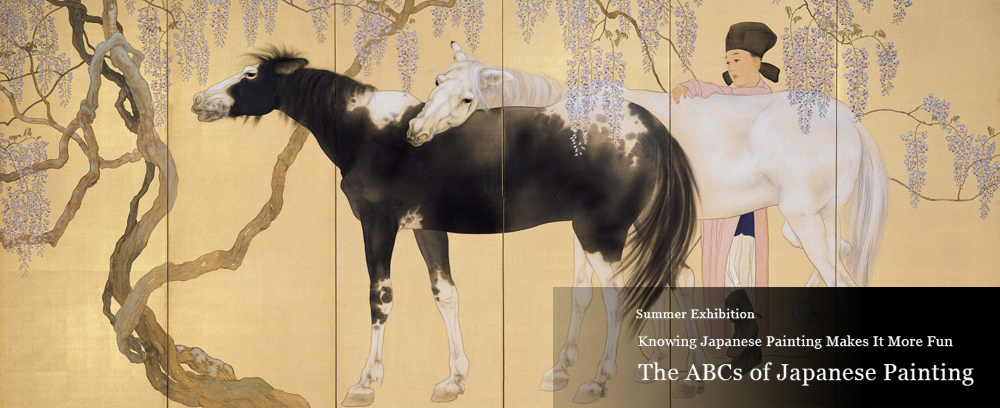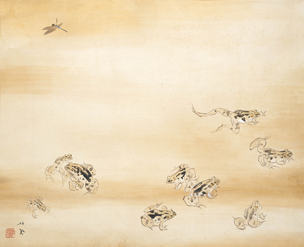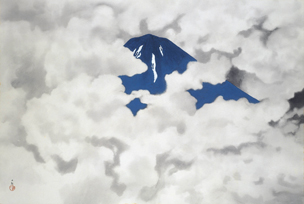
Spring Day(Right Screen)|Hashimoto Kansetsu
Summer Exhibition,2021 CLOSED
Knowing Japanese Painting Makes It More Fun
The ABCs of Japanese Painting
June 1 (Tue) – August 30 (Mon), 2021
Among the visitors of the museum, it is often heard that Japanese painting appears to be difficult to interpret, or that it is vague and not relatable. Certainly, unlike the examples of water painting that we usually learn at school, there are few people who have painted in the traditional Japanese style. Most people may therefore feel that it is difficult to produce and/or interpret modern Japanese painting because they are not accustomed to it.
Traditional Japanese painting uses mainly sumi and mineral pigments, which are not used in Western painting, and the works are painted on washi, traditional Japanese paper, or silk, not on canvas. Mineral pigments slightly vary in color due to the size of grain, and produce a characteristic delicate, fine coloring. Compositions making use of decorous lines and blank spaces are also one of the attractions of Japanese painting, in whose expressions can the aesthetic of the Japanese be found. If you know even a little about Japanese painting, you might be able to appreciate the works more deeply and take greater enjoyment from them.
This exhibition will show works by masters of modern Japanese painting, along with the basic explication about the materials, techniques and other essential factors. We hope you will learn the ABCs of Japanese painting and take pleasure in appreciating Japanese paintings.
Traditional Japanese painting uses mainly sumi and mineral pigments, which are not used in Western painting, and the works are painted on washi, traditional Japanese paper, or silk, not on canvas. Mineral pigments slightly vary in color due to the size of grain, and produce a characteristic delicate, fine coloring. Compositions making use of decorous lines and blank spaces are also one of the attractions of Japanese painting, in whose expressions can the aesthetic of the Japanese be found. If you know even a little about Japanese painting, you might be able to appreciate the works more deeply and take greater enjoyment from them.
This exhibition will show works by masters of modern Japanese painting, along with the basic explication about the materials, techniques and other essential factors. We hope you will learn the ABCs of Japanese painting and take pleasure in appreciating Japanese paintings.

Takeuchi Seiho
"A Fine Day During the Rainy Season"
(1934)
"A Fine Day During the Rainy Season"
(1934)
Selected Works from the Taikan Collection—Summer—
Morning in the Mountains / Evening in the Mountains, which is well differentiated between the scenes of morning and evening only with sumi, and Summer: Four Seasons of Sacred Mt. Fuji depicting Mt. Fuji in summer showing its top among the rising clouds. We will display Taikan works that grasp Japanese landscapes full of seasonable aspects.

Yokoyama Taikan
"Summer: Four Seasons of Sacred Mt. Fuji"
(1940)
"Summer: Four Seasons of Sacred Mt. Fuji"
(1940)

